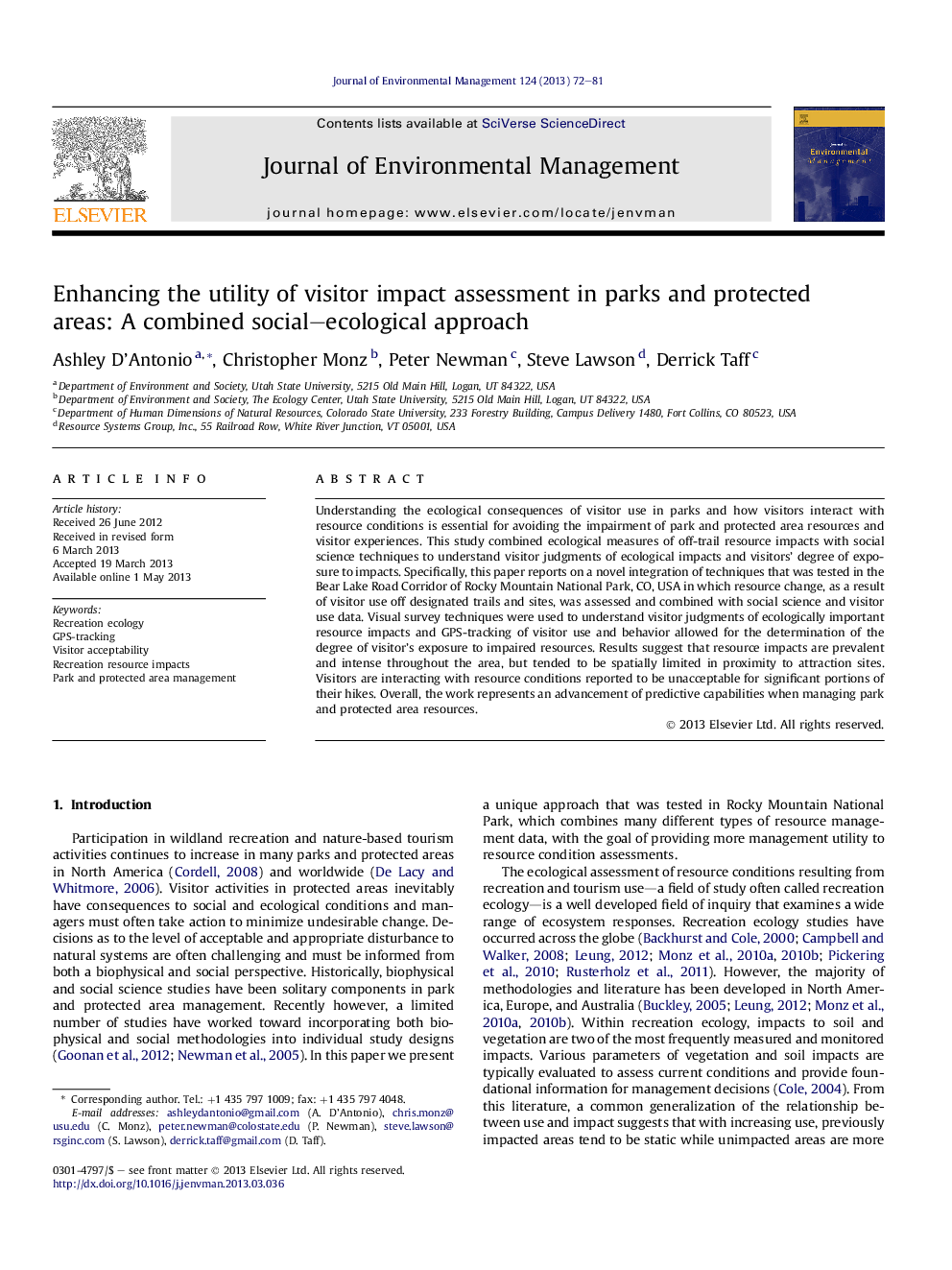| Article ID | Journal | Published Year | Pages | File Type |
|---|---|---|---|---|
| 1056263 | Journal of Environmental Management | 2013 | 10 Pages |
•We conducted a resource assessment of recreation disturbance.•We integrated the assessment with visitor use and social science data.•Recreation disturbance is extensive and occurring in sensitive areas.•Visitors are interacting with resource conditions that are considered unacceptable.•Integrated studies provide managers with robust and useful information.
Understanding the ecological consequences of visitor use in parks and how visitors interact with resource conditions is essential for avoiding the impairment of park and protected area resources and visitor experiences. This study combined ecological measures of off-trail resource impacts with social science techniques to understand visitor judgments of ecological impacts and visitors' degree of exposure to impacts. Specifically, this paper reports on a novel integration of techniques that was tested in the Bear Lake Road Corridor of Rocky Mountain National Park, CO, USA in which resource change, as a result of visitor use off designated trails and sites, was assessed and combined with social science and visitor use data. Visual survey techniques were used to understand visitor judgments of ecologically important resource impacts and GPS-tracking of visitor use and behavior allowed for the determination of the degree of visitor's exposure to impaired resources. Results suggest that resource impacts are prevalent and intense throughout the area, but tended to be spatially limited in proximity to attraction sites. Visitors are interacting with resource conditions reported to be unacceptable for significant portions of their hikes. Overall, the work represents an advancement of predictive capabilities when managing park and protected area resources.
